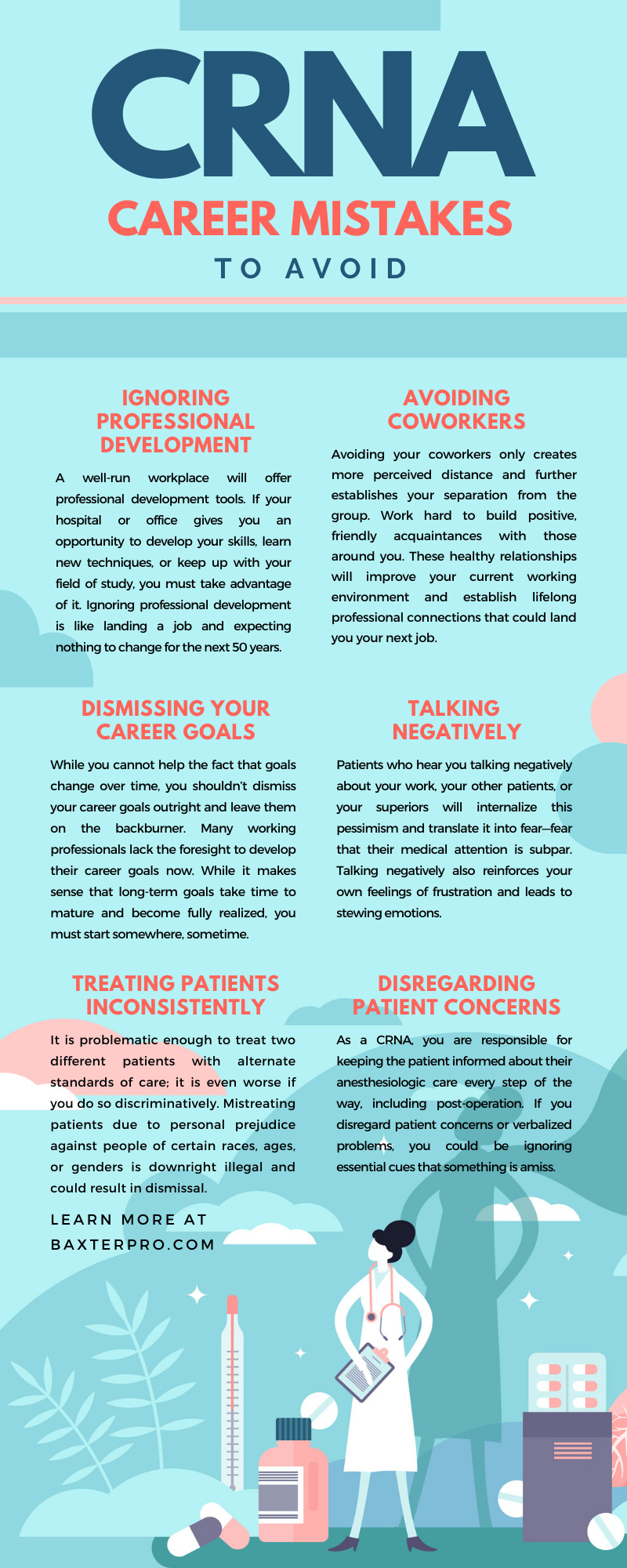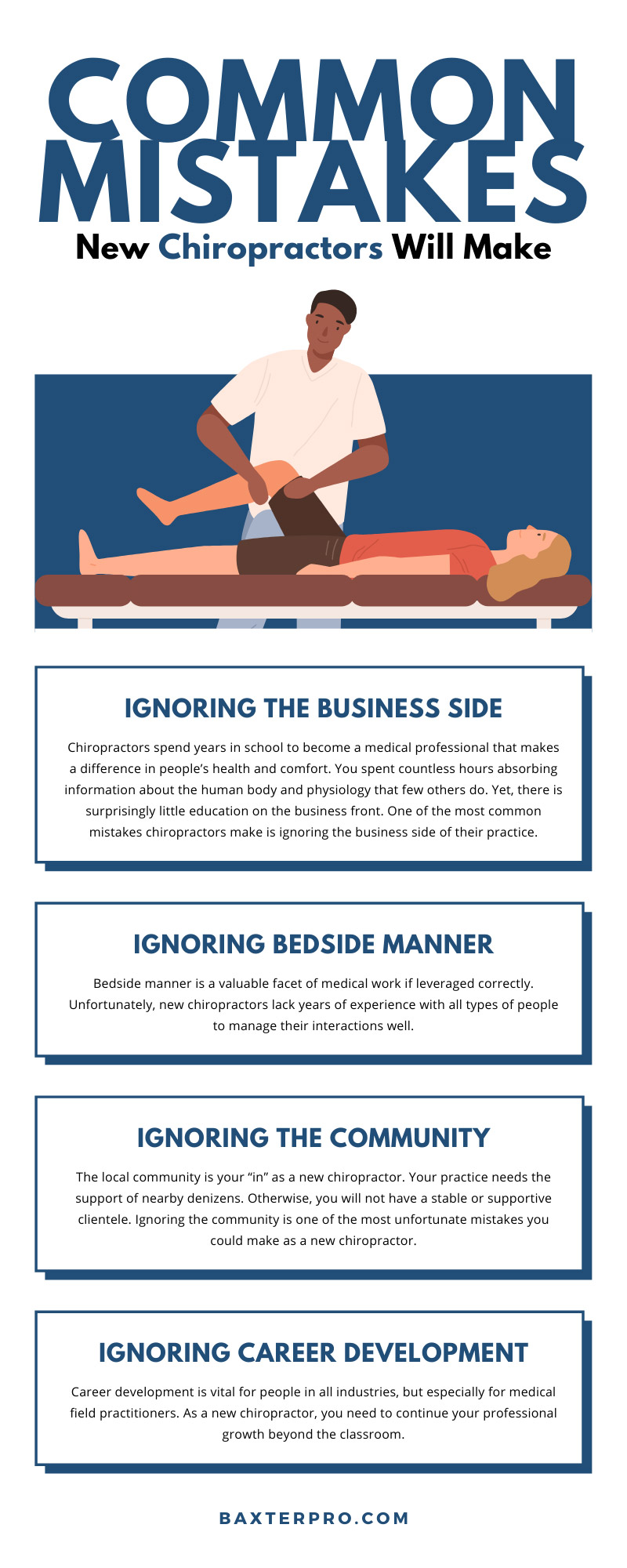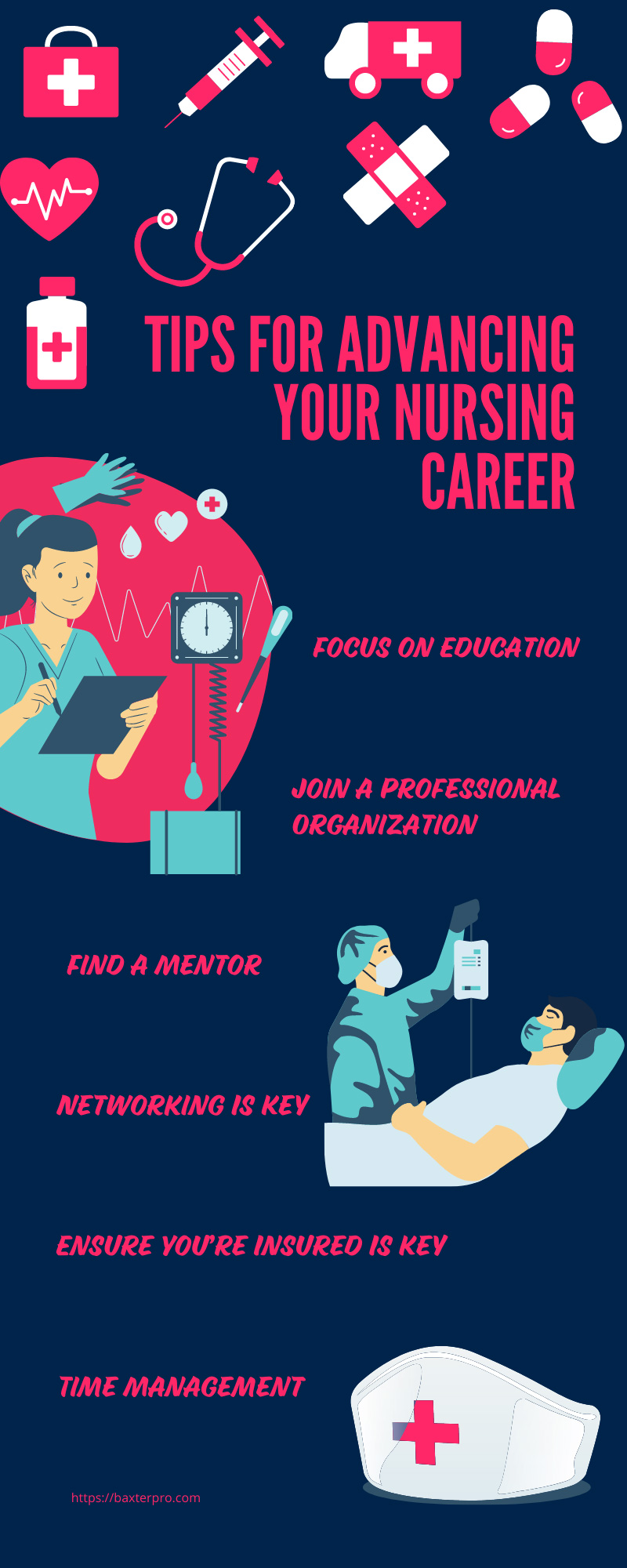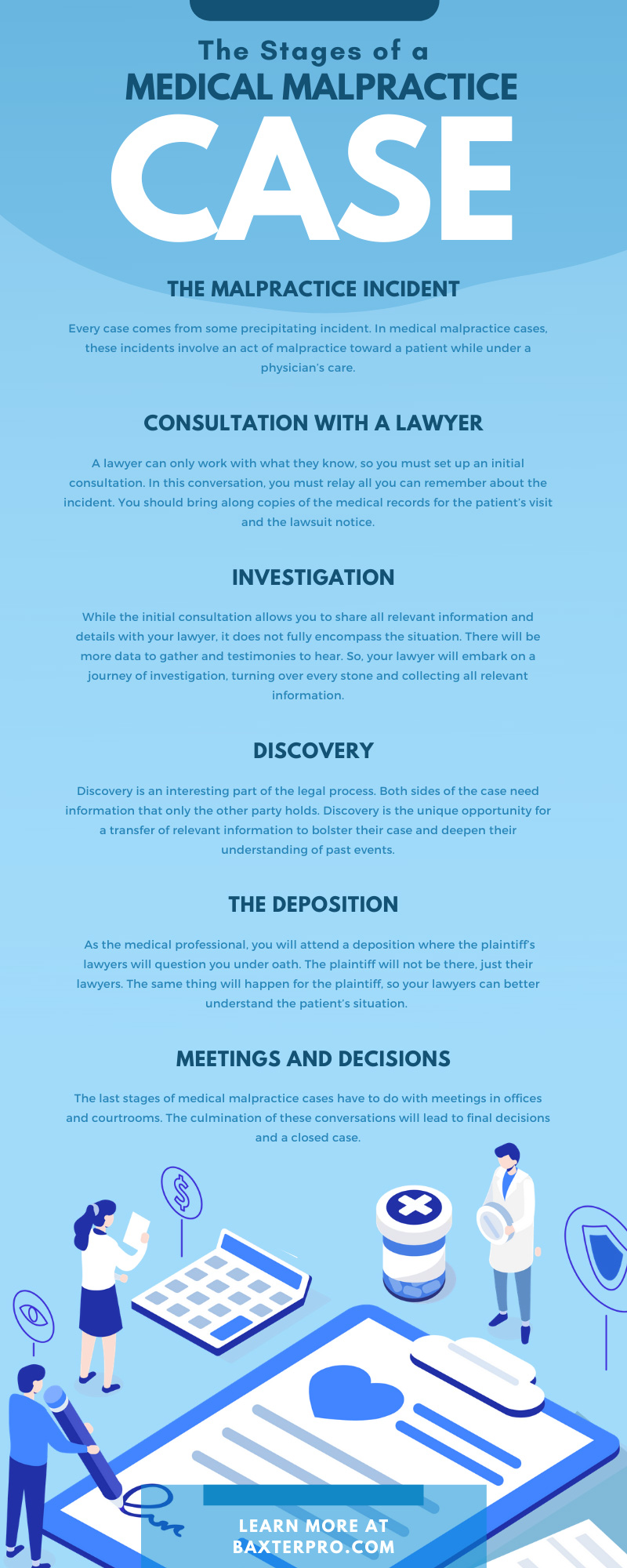When entering or developing your professional life, you must know the best practices as well as the potential pitfalls. While no one is impervious to ignorance or error, you should do your best to establish a firm vocational foundation. Here are the most pervasive CRNA career mistakes to avoid.
Overlooking the Professional Environment
The day-to-day work of health professionals involves life and death treatments for dozens of patients. While it is completely understandable that someone may become lost in the thrill and details of managing patients, it is important not to overlook your professional environment. Promotions, career opportunities, and professional development are less likely to come your way without direct effort on your part.
Ignoring Professional Development
A well-run workplace will offer professional development tools. If your hospital or office gives you an opportunity to develop your skills, learn new techniques, or keep up with your field of study, you must take advantage of it. Ignoring professional development is like landing a job and expecting nothing to change for the next 50 years. While you may know enough about your subject to do a good job, you won’t stay up to date on new software, medical breakthroughs, scientific research, and more. You shouldn’t lose sight of the tenacious student you were in nursing school and should nurture that instinct to keep learning and growing.
Dismissing Your Career Goals
When you entered your degree program, you fantasized about your career trajectory and thought about all the places you would go. As the months and years pass, these aspirations can fade, leaving you with a sense of stagnancy. While you cannot help the fact that goals change over time, you shouldn’t dismiss your career goals outright and leave them on the backburner.
Many working professionals lack the foresight to develop their career goals now. While it makes sense that long-term goals take time to mature and become fully realized, you must start somewhere, sometime. As a certified registered nurse anesthetist, you want to build a solid foundation for your future. This includes things like finding CRNA malpractice insurance. It’s essential for you to have coverage. Other considerations include attending networking events, and completing more education, all with the aspiration of developing your professional life and achieving your career goals.
Underestimating Bedside Manner
How nurses interact with patients matters deeply. While doctors have a reputation for being condescending and dismissive—despite many being quite nice people—nurses are the backbone of personalized healthcare. Nurses spend time learning about patients and their lives, all the while attending to their daily needs and treatments. Bedside manner is critical for a nurse, but even more so for CRNAs who spend less time with patients and manage one of the most critical parts of a person’s procedure.
Talking Negatively
Your patients are in the hospital because something is going wrong with their bodies, and they need specialized attention. Just because you have a bad day or are in a professional slump, it does not excuse unbridled negativity, especially toward patients. Bedside manner is just as much about what you say as it is how you conduct yourself. Patients who hear you talking negatively about your work, your other patients, or your superiors will internalize this pessimism and translate it into fear—fear that their medical attention is subpar.
Talking negatively also reinforces your own feelings of frustration and leads to stewing emotions. While you may not acknowledge it in the moment, this internal turmoil can lead to mistakes when treating patients. And, as a CRNA, such errors can be costly or even fatal. Work on your inner dialogue and seek ways to find gratitude and positivity around you at work. If there are challenging situations or people eating at you inside, talk with an HR representative or trusted superior to work things out. Your career is intricately tied to who you are as a person. So, work on yourself to avoid painful career mistakes.
Treating Patients Inconsistently
Your patients may not communicate with one another, but you know your superiors will notice any discrepancies in your care. It is problematic enough to treat two different patients with alternate standards of care; it is even worse if you do so discriminatively. Mistreating patients due to personal prejudice against people of certain races, ages, or genders is downright illegal and could result in dismissal. Address any discriminatory behaviors you notice in yourself before they cause detriment to your career aspirations.
Disregarding Patient Concerns
Every patient has a right to know what you do with their body, especially during an operation where you put them under anesthetic. As a CRNA, you are responsible for keeping the patient informed about their anesthesiologic care every step of the way, including post-operation. If you disregard patient concerns or verbalized problems, you could be ignoring essential cues that something is amiss. Disregarding patient concerns and making patients feel unheard is terrible enough. Disregarding medically relevant information that results in injury or death is even worse. The quality of your bedside manner could truly mean the difference between death and life.
Remember these CRNA career mistakes to avoid as you work each day. You are the only one looking out for yourself and your career trajectory, so make every effort to dig into your professional life. It is always okay to make mistakes, just ensure you actually learn from them. It can help to keep these risk management tips in mind. When you make a career mistake, you may take one step back. However, you have the full capacity to take two steps forward and continue growing.
If you need help figuring out how to maximize your professional life in medicine and protect your career, reach out to us at Baxter & Associates to learn more about our malpractice insurance policies. To learn more about CRNA coverage, read here.

















